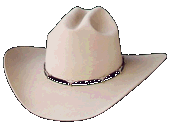Showing posts with label Nature 2. Show all posts
Showing posts with label Nature 2. Show all posts
Friday, April 06, 2007
The Human Sexes - Part Six - The Gender Wars
"Written and presented by Desmond Morris (1997). Do you know what side of the Battle Of The Sexes you're on? You might be stunned by this eye-opening look at the recent struggle for equality between the sexes. Originally, there was a primitive balance between the sexes, but when people left the village for the city, the natural balance disappeared. Find out the origins of honeymoons and other tools of male dominance like wedding rings and female circumcision. Travel to Finland for the annual wife-carrying contest celebrating the capture of women from other villages. follow the rise of feminism, from turn-of-the-century suffragettes to the National Organization for Women. Visit the front lines of the gender wars with female stock traders and female firefighters who parachute into blazing California forests. Pay attention: what you learn here may just help you survive The Gender Wars."
Wednesday, April 04, 2007
Godfrey Reggio - ANIMA MUNDI
"ANIMA MUNDI - THE SOUL OF THE WORLD
"Anima Mundi is a film about animals. It contains no actors, has not plot and has no script. Anima Mundi was created by Godfrey Reggio who also created Koyaanisqatsi.
"Anima Mundi was commissioned by the Italian jewellery company Bvlgari, for the World Wide Fund for Nature which used the film for its Biological Diversity Program. The breathtaking images of nature where intended to make the viewer feel that they where part of the natural world. Philip Glass provided the musical score in Anima Mundi, as with all of Godfrey Reggio's films.
"The concept of the term Anima Mundi is that the order and beauty of nature are made of the almost endless species and varieties of animals, elements and beings that make a balanced whole. All of the shots in Anima Mundi relate to this though, rather than just being images of animals that one might find in a BBC documentary.
"The footage in Anima Mundi is made up of existing and newly shot footage. Only the finest existing footage was considered for the film. The score provides a good accompaniment to the animal scenes. Philip Glass often provides an unusual score, as is the case with Anima Mundi. However the sounds and rhythms complement the film well."
"Anima Mundi is a film about animals. It contains no actors, has not plot and has no script. Anima Mundi was created by Godfrey Reggio who also created Koyaanisqatsi.
"Anima Mundi was commissioned by the Italian jewellery company Bvlgari, for the World Wide Fund for Nature which used the film for its Biological Diversity Program. The breathtaking images of nature where intended to make the viewer feel that they where part of the natural world. Philip Glass provided the musical score in Anima Mundi, as with all of Godfrey Reggio's films.
"The concept of the term Anima Mundi is that the order and beauty of nature are made of the almost endless species and varieties of animals, elements and beings that make a balanced whole. All of the shots in Anima Mundi relate to this though, rather than just being images of animals that one might find in a BBC documentary.
"The footage in Anima Mundi is made up of existing and newly shot footage. Only the finest existing footage was considered for the film. The score provides a good accompaniment to the animal scenes. Philip Glass often provides an unusual score, as is the case with Anima Mundi. However the sounds and rhythms complement the film well."
Wednesday, March 28, 2007
The Human Sexes - Part Five - The Maternal Dilemma
"Written and presented by Desmond Morris (1997). In today's world' is it tougher to be a mother... or a father? Will it ever be possible to balance work and motherhood? No matter what you currently believe, The Maternal Dilemma will surprise you with new insight. See working mothers in Japan and England who leave their children in day-care centers. Discover the 'granny solution' in Greece. Explore the 'paternal solution' with stay-at-home fathers in America. Have dinner with a man from Utah who has several wives: some have children while others pursue careers. Compare women who work in fields with babies at their side, to Western women trying to balance kids with a career. It'll soon become clear that The Maternal Dilemma is something everybody shares."
Tuesday, March 27, 2007
Sunday, March 25, 2007
What Makes Us Human? - 2 - Copycats
"While our closest animal relatives have been swinging from the trees, humans have built a world that is vastly more complex. What are the defining features that have allowed us to do this? Are we special, and separate from all other animals, or are we just an especially successful mammal?"
Life on Earth - Episode 09 - The Rise of the Mammals
"The ninth episode is the first of several to concentrate on mammals. The platypus and the echidna are the only mammals that lay eggs (in much the same manner of reptiles), and it is from such animals that others in the group evolved. Since mammals have warm blood and most have dense fur, they can hunt at night when temperatures drop. It is for this reason that they became more successful than their reptile ancestors, who needed to heat themselves externally. Much of the programme is devoted to marsupials (whose young are partially formed at birth) of which fossils have been found in the Americas dating back 60 million years. However, because of continental drift, this kind of mammal flourished in Australia. Examples shown include the quoll, the Tasmanian devil, the koala, the wombat and the largest marsupial, the red kangaroo. The thylacine was similar to a wolf but is now thought to be extinct. In 1969, bones of creatures such as a 3 metre-tall kangaroo and a ferocious marsupial lion were found in a cave in Naracoorte, South Australia. The reason for these animals' extinction is, once again, thought to be climate change. Finally, Attenborough describes the most prolific mammals — those that originated in the Northern Hemisphere and give birth to fully formed young. He states, "The placenta and the womb between them provide a degree of safety and a continuity of sustenance which is unparalleled in the animal world.""
Saturday, March 24, 2007
The Human Sexes - Part Four - Passages Of Life
"Written and presented by Desmond Morris (1997). Does society treat men and women differently? You may not like the unsettling answers you'll find in Passages Of Life. Compare the way different cultures deal with boys and girls as they grow up. Some believe male circumcision began as an ancient Egyptian snake worship ritual to ensure immortality. In the Middle East, puberty brings a girl her first veil; in Yemen, a boy his first grown-up dagger. Watch young women turned into ladies at an etiquette school in England, and young men turned into killers by the US Marine Corps. Witness a marriage celebration in a small Greek village - where a dowry still makes a difference. Passages Of Life might make you feel better about growing up... or worse."
Friday, March 23, 2007
The Mystery Of The Jurassic
"For years scientists have been trying to find the mysterious evolutionary master key responsible for transforming the dinosaurs into world-beaters. In the early Jurassic, 200 million years ago, they were a relatively small group of primitive creatures. By the late Jurassic, 50 million years later, they had become the magnificent array of carnivores and giant plant eaters that would dominate the planet for millions of years. In between lies the mysterious period of the middle Jurassic in which all these changes must have happened. But what were they? What was it that transformed the dinosaurs?"
Wednesday, March 21, 2007
Dragons Alive - Smart Reptiles
"The second program focuses on the amazing natural technology that makes reptiles such a successful group. Are reptiles the bio-technology wizards of the animal world? If you count sprinting on water, shooting blood from the eyes, spitting poison at their enemies, navigating by magnetic fields, converting ribs into a hang-glider, or communicating emotions in color then, yes, they are!"
What Makes Us Human? - 1 - Big Heads
2While our closest animal relatives have been swinging from the trees, humans have built a world that is vastly more complex. What are the defining features that have allowed us to do this? Are we special, and separate from all other animals, or are we just an especially successful mammal?"
Monday, March 19, 2007
The Blue Planet - 4 - Frozen Seas
"The Blue Planet, the definitive exploration of the Earth's final frontier is now over. From the deep to the shore, from pole to pole it revealed extraordinary life and behavior that had never before been filmed. In some cases the species were only recently known to scientists."
The Human Sexes - Part Three - Patterns Of Love
"Written and presented by Desmond Morris (1997). How far would you go for love? Get ready to be amazed as you see people go further than you ever thought possible. Patterns Of Love will take you to a brothel in Nevada, love hotels for married adults in Japan and a bachelor auction in Alaska. You'll meet pop star Mongo Faya of Cameroon... and his 58 wives. Visit Istanbul's Topkapi Palace where the Sultans keep harems of hundreds of wives. Fly to Moscow with a group of American men hoping to bring home just one wife. And check out technology's answer to a troubled marriage: an automatic divorce machine that accepts all major credit cards. Patterns Of Love may change your definition of love."
Saturday, March 17, 2007
Dragons Alive - Ruling Reptiles
"The extinction of the dinosaurs left a power vacuum. Enter the dragons: powerful modern reptiles which still dominate large areas of our planet. Ruling Reptiles goes in search of the modern reptiles that have inherited the dominant role."
Life on Earth - Episode 08 - Lords of the Air
"The eighth episode focuses on birds. The feather is key to everything that is crucial about a bird: it is both its aerofoil and its insulator. The earliest feathers were found on a fossilised archeopteryx skeleton in Bavaria. However, it had claws on its wings and there is only one species alive today that does so: the hoatzin, whose chicks possess them for about a week or so. Nevertheless, it serves to illustrate the probable movement of its ancestor. It may have taken to the trees to avoid predators, and over time, its bony, reptilian tail was replaced by feathers and its heavy jaw evolved into a keratin beak. Beaks come in a variety of shapes depending on a bird’s feeding habits: examples given include the pouched bill of a pelican, the hooked beak of the vulture and the elongated mouth of the hummingbird. Attenborough hails the tern as one of the most graceful flyers and the albatross as a skilled glider. The swift is shown as one of the fastest: it can fly at 170 km/h. Birds communicate through display and/or song, and the elaborate courtship rituals of New Guinea’s birds of paradise are shown. All birds lay eggs, and the range of different nesting sites and parenting skills is explored. Finally, Attenborough visits Gibraltar to observe migratory birds. These rely on thermals when flying overland and use height to conserve energy when crossing oceans. It is estimated that some 5,000 million southbound birds cross the Mediterranean Sea each autumn."
Friday, March 16, 2007
The Blue Planet - 3 - Open Ocean
"The Blue Planet, the definitive exploration of the Earth's final frontier is now over. From the deep to the shore, from pole to pole it revealed extraordinary life and behavior that had never before been filmed. In some cases the species were only recently known to scientists."
Thursday, March 15, 2007
The Human Sexes - Part Two - The Language Of The Sexes
"Written and presented by Desmond Morris (1997). How does boy meet girl? Is finding a mate ever easy? How do you send out a signal that you're available? There are as many ways to speak the Language Of The Sexes as there are cultures. The Japanese build shrines to the male phallus. Many Muslim women live behind veils. Ethiopian tribeswomen enlarge their lips with ceramic plates, and some Chinese used to crush women's feet to keep them tiny and delicate. Compare all this to America, where women practice gender amplification with silicone breast implants, collagen lip injections and tight high heels. It's easy to see why the Language Of The Sexes is so hard to understand."
Life on Earth - Episode 07 - Victors of the Dry Lands
"The seventh episode is devoted to the evolution of reptiles. They are not as restricted as their amphibian ancestors, since they can survive in the hottest climates. The reason is their scaly, practically watertight skin. The scales protect the body from wear and tear and in the case of some species of lizard, such as the Australian thorny devil, serve to protect from attack. The horned iguana from the West Indies is also one of the most heavily armoured. The skin is rich in pigment cells, which provide effective means of camouflage, and the chameleon is a well known example. Temperature control is important to reptiles: they can’t generate body heat internally or sweat to keep cool. Therefore, they rely on the sun and areas of shade. The reptiles were the first vertebrates for whom internal fertilisation was essential, so they developed the watertight egg, which hatches fully formed young. The age of the dinosaurs is explored, and Attenborough surmises that it may have been climate change that led to their abrupt demise. Those that survived were water-dwellers, and the bull Nile crocodile is the largest reptile alive today. Snakes evolved when burrowing lizards lost their legs but returned above ground. The boa, puff adder and sidewinder demonstrate methods of locomotion, the egg-eating snake has an extreme example of a hinged jaw, and the lethal diamondback rattlesnake is described as the most efficient at dispatching its prey."
Wednesday, March 14, 2007
Subscribe to:
Posts (Atom)











